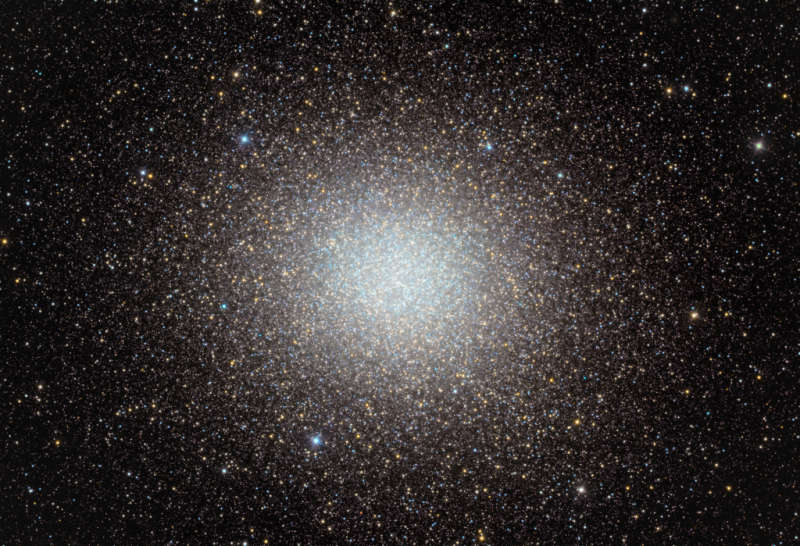Credit & Copyright: Neil Corke,
Heaven's Mirror Observatory
Explanation:
Globular star cluster
Omega Centauri,
also known as NGC 5139, is 15,000 light-years away.
The cluster is packed with about 10 million
stars much older than the Sun within a volume about 150 light-years in
diameter.
It's the largest and brightest of 200 or so known
globular
clusters that roam the halo of our Milky Way galaxy.
Though most star clusters consist of stars with the same age and
composition, the enigmatic Omega Cen exhibits the presence of
different
stellar populations with a spread of ages and chemical abundances.
In fact,
Omega Cen may be
the
remnant
core of a small galaxy merging with the Milky Way.
Omega Centauri's red giant stars (with a
yellowish hue) are easy to pick
out in this
sharp, color telescopic view.
1999 2000 2001 2002 2003 2004 2005 2006 2007 2008 2009 2010 2011 2012 2013 2014 2015 2016 2017 2018 2019 2020 2021 2022 2023 2024 2025 |
Yanvar' Fevral' Mart Aprel' Mai Iyun' Iyul' Avgust Sentyabr' Oktyabr' Noyabr' Dekabr' |
NASA Web Site Statements, Warnings, and Disclaimers
NASA Official: Jay Norris. Specific rights apply.
A service of: LHEA at NASA / GSFC
& Michigan Tech. U.
|
Publikacii s klyuchevymi slovami:
Omega Centauri - globular cluster - Sharovoe skoplenie
Publikacii so slovami: Omega Centauri - globular cluster - Sharovoe skoplenie | |
Sm. takzhe:
Vse publikacii na tu zhe temu >> | |
